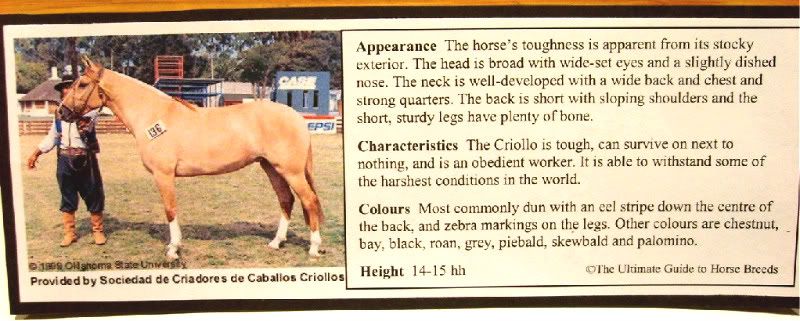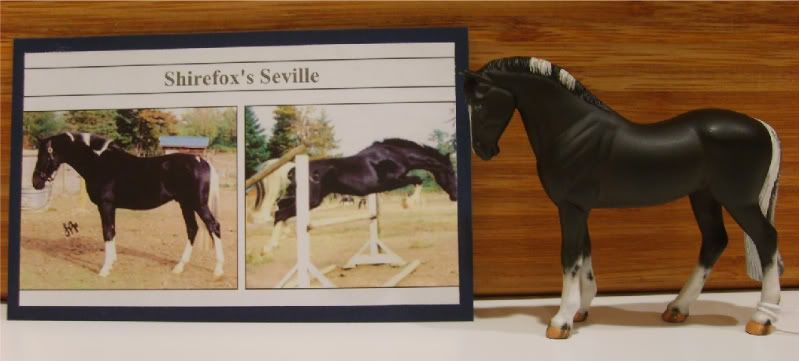Today's guest blogger is Amy Widman, owner of this Smarty Jones along with many, many, many National and overall championships:
What: For the purposes of Live Showing, “Documentation” generally means reference pictures, breed standards, or other valuable information about the breed you have assigned your model. It is displayed in front of or near your model on the Live Show table to be used as additional information in judging.
When: The most obvious time to use documentation is when your model is representing an obscure or relatively unknown breed. If you’ve been diligent in scouring through breed books and online Google searches to find a really great, new, rare, or odd breed, then it is best to share that new-found information with your judge. Show them that you did your homework and know your breed anatomy and standards. Some judges may have heard of your special breed, but others may not.
Have you heard of the Karabair? (Me neither)
Another good time to supply documentation is if you have a common breed, but with a twist. Maybe you found a unique color that is not well-known within the breed, or an example of a real life horse that shows a different body type than what is automatically thought of in breed standards. Some examples would be Pinto Thoroughbreds or extremely stocky Australian Stock Horses (which are usually thought of as reflecting more sport-type conformation).
Or, maybe you have a pretty common breed or cross in mind for your model, but you’ve found a photo of a real horse that matches your model’s body type and color *perfectly*. This would be a good time to set that picture right in front of your model to show the judge that “yes, my model is a realistic representation of this breed/color/type and here is the proof in the photo of this real horse.” A warning though: do not overuse this form of documentation. Every horse, in every class, doesn’t need a picture matching the model.
Click for big
Why: No matter how wonderful and knowledgeable a judge is, NO JUDGE KNOWS EVERY COLOR, STANDARD, AND TYPE OF EVERY BREED THROUGHOUT HISTORY. So, help them out and provide documentation. If a judge comes across a breed they’ve never heard of, or are questioning if a certain breed comes in the color your model is representing, they may choose to err on the safe side and not place your horse over a model that they know more about.
In terms of the amount of information to include on your documentation, less is more! The judge does not have time to read through pages of information about a breed. If it’s a little known breed, include some info about basic characteristics, color, and their uses, with one or two pictures. For those more common breeds, stating the breed or cross breeds with some simple pictures will suffice. Using clear pictures and easy-to-read font is always a plus!









Thank you so much for this article. It will be a big help to me with my next showing of my model horses.
ReplyDeleteThank you so much!